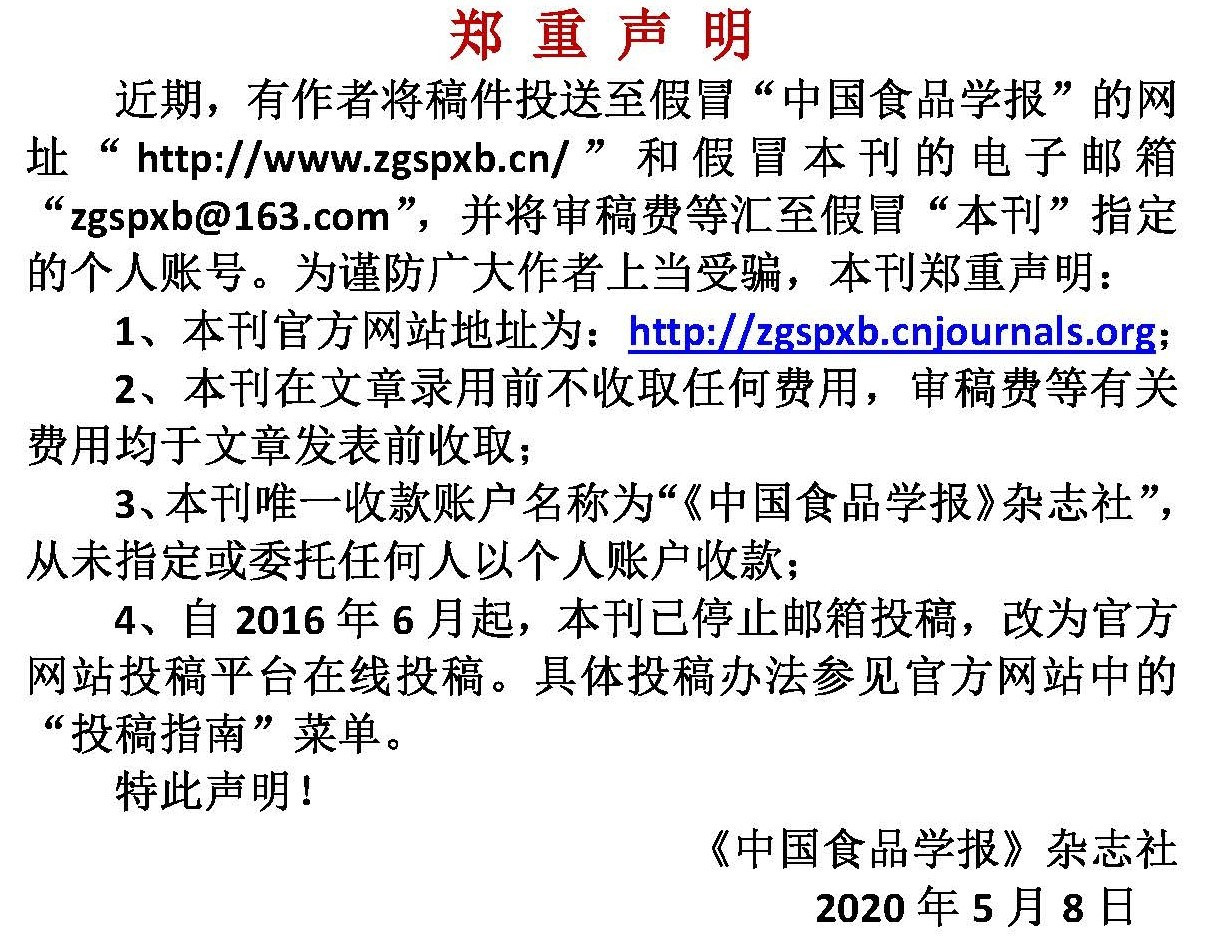优选本土乳酸菌-酵母接种时序对模拟红葡萄汁混菌发酵特性的影响
作者:
作者单位:
(1.西北农林科技大学葡萄酒学院 陕西杨凌 712100;2.陕西省葡萄与葡萄工程技术研究中心 陕西杨凌 712100;3.西北农林科技大学宁夏贺兰山东麓葡萄酒试验示范站 宁夏永宁 750104)
基金项目:
国家自然科学基金联合基金重点项目(U21A 20269);中央高校基本科研业务费(2452018118);陕西省自然科学基础研究计划项目(2021JQ-136);陕西省引进国外博士专项资助项目(F2020221005)
Effects of Inoculating Timing of Selected Indigenous Lactic Acid Bacteria and Yeast on Fermentation in Red Synthetic Grape Juice Medium
Author:
- Jiang Jiao 1,2,3
Jiang Jiao
College of Enology, Northwest A & F University, Yangling 712100, Shaanxi;Shaanxi Grape and Wine Engineering Technology Research Center, Yangling 712100, Shaanxi;Ningxia Helan Mountains East Foothill Wine Experiment and Demonstration Station of Northwest A & F University, Yongning 750104, Ningxia
在期刊界中查找
在百度中查找
在本站中查找 - Shi Xuerong 1
- Chai Mengmiao 1
- Huang Rong 1
- Zhang Aixia 1
- Song Yuyang 1,2,3
Song Yuyang
College of Enology, Northwest A & F University, Yangling 712100, Shaanxi;Shaanxi Grape and Wine Engineering Technology Research Center, Yangling 712100, Shaanxi;Ningxia Helan Mountains East Foothill Wine Experiment and Demonstration Station of Northwest A & F University, Yongning 750104, Ningxia
在期刊界中查找
在百度中查找
在本站中查找 - Qin Yi 1,2,3
Qin Yi
College of Enology, Northwest A & F University, Yangling 712100, Shaanxi;Shaanxi Grape and Wine Engineering Technology Research Center, Yangling 712100, Shaanxi;Ningxia Helan Mountains East Foothill Wine Experiment and Demonstration Station of Northwest A & F University, Yongning 750104, Ningxia
在期刊界中查找
在百度中查找
在本站中查找 - Liu Yanlin 1,2,3
Liu Yanlin
College of Enology, Northwest A & F University, Yangling 712100, Shaanxi;Shaanxi Grape and Wine Engineering Technology Research Center, Yangling 712100, Shaanxi;Ningxia Helan Mountains East Foothill Wine Experiment and Demonstration Station of Northwest A & F University, Yongning 750104, Ningxia
在期刊界中查找
在百度中查找
在本站中查找
Affiliation:
(1.College of Enology, Northwest A & F University, Yangling 712100, Shaanxi;2.Shaanxi Grape and Wine Engineering Technology Research Center, Yangling 712100, Shaanxi;3.Ningxia Helan Mountain's East Foothill Wine Experiment and Demonstration Station of Northwest A & F University, Yongning 750104, Ningxia)
引用本文
姜娇,史学容,柴梦淼,黄蓉,张艾霞,宋育阳,秦义,刘延琳.优选本土乳酸菌-酵母接种时序对模拟红葡萄汁混菌发酵特性的影响[J].中国食品学报,2023,23(11):114-124
复制分享
文章指标
- 点击次数:
- 下载次数:
- HTML阅读次数:
历史
- 收稿日期:2022-11-18
- 在线发布日期: 2023-12-14
文章二维码

版权所有 :《中国食品学报》杂志社 京ICP备09084417号-4
地址 :北京市海淀区阜成路北三街8号9层 邮政编码 :100048
电话 :010-65223596 65265375 电子邮箱 :chinaspxb@vip.163.com
技术支持:北京勤云科技发展有限公司
地址 :北京市海淀区阜成路北三街8号9层 邮政编码 :100048
电话 :010-65223596 65265375 电子邮箱 :chinaspxb@vip.163.com
技术支持:北京勤云科技发展有限公司
请使用 Firefox、Chrome、IE10、IE11、360极速模式、搜狗极速模式、QQ极速模式等浏览器,其他浏览器不建议使用!

